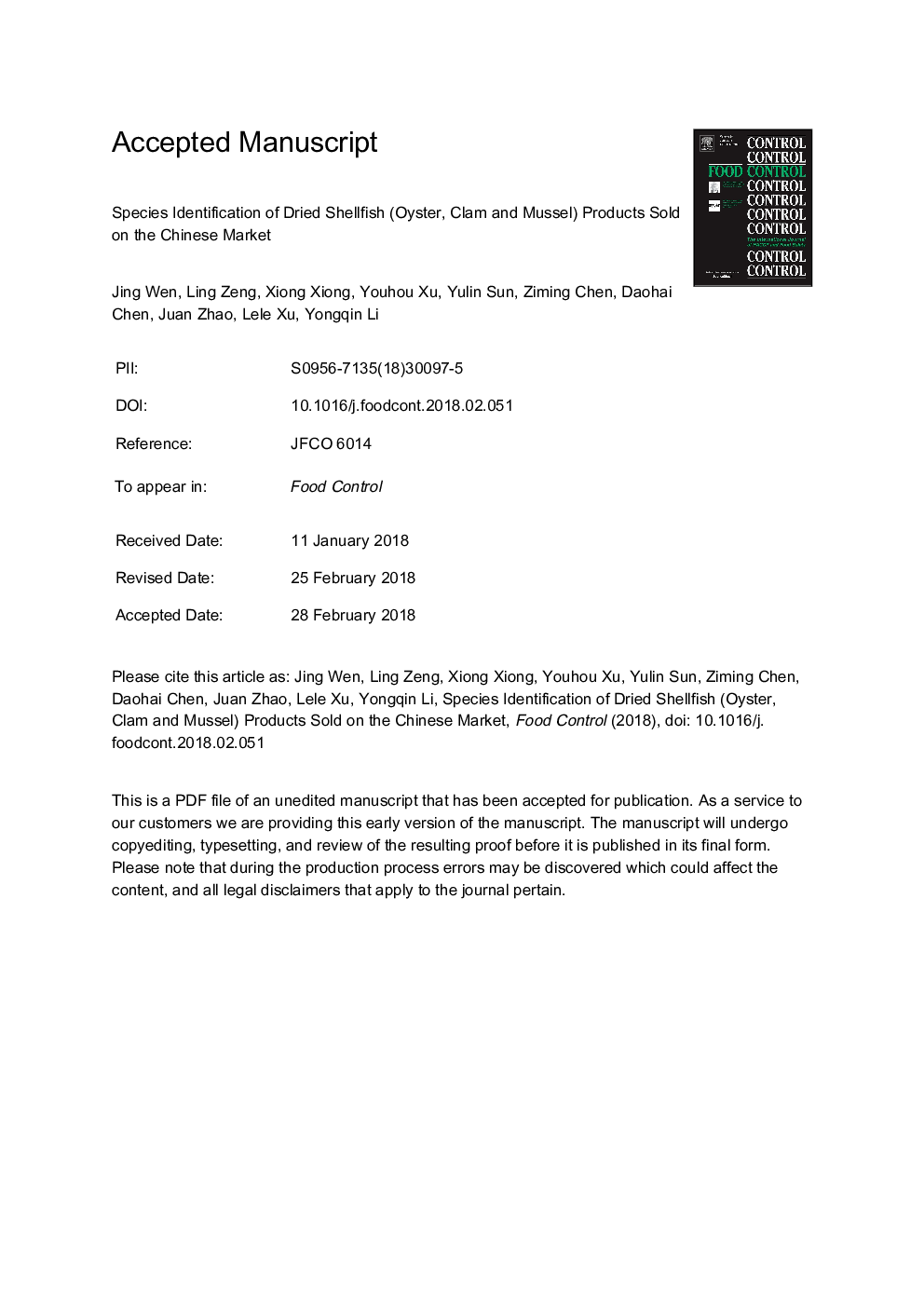| Article ID | Journal | Published Year | Pages | File Type |
|---|---|---|---|---|
| 8887968 | Food Control | 2018 | 22 Pages |
Abstract
Dried oyster, clam and mussel products have been commonly recommended and consumed in Asia over many centuries. However, the true species of the shellfish species in the trade is unknown. It is difficult to identify the shellfish species just based on their morphological characters of dried muscle and visceral mass without shells. In this study, 300 dried oyster (shenghao), clam (geli) and mussel (dancai) products commercialized in the markets of ten Chinese coastal cities were analyzed in order to authenticate species. Direct sequencing method based on fragments of the COI gene was carried out and results showed that 81% shenghao were extracted from Crassostrea angulata (Portuguese oyster), 19% shenghao were Crassostrea gigas (Pacific cupped oyster), 58% geli were extracted from Mactra chinensis (sunray surf clam), 42% geli were Ruditapes philippinarum (Manila clam) and all (100%) dancai were extracted from Mytilus galloprovincialis (Mediterranean mussel). Therefore, this work facilitates the identification of dried shellfish products in the market, support of food control and protection of consumers' rights. Moreover, the result showed that Portuguese oyster, sunray surf clam, Manila clam and Mediterranean mussel have distributed (naturally distributed or cultured) to most coastal provinces of China.
Related Topics
Life Sciences
Agricultural and Biological Sciences
Food Science
Authors
Jing Wen, Ling Zeng, Xiong Xiong, Youhou Xu, Yulin Sun, Ziming Chen, Daohai Chen, Juan Zhao, Lele Xu, Yongqin Li,
